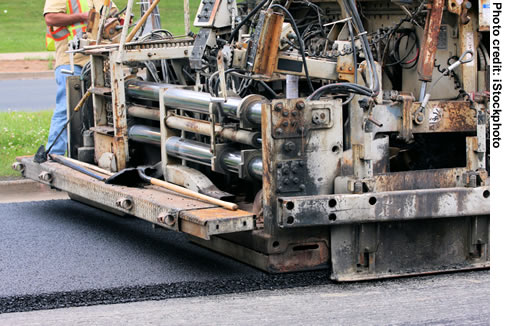U.S. Department of Transportation
Federal Highway Administration
1200 New Jersey Avenue, SE
Washington, DC 20590
202-366-4000
Focus
| Accelerating Infrastructure Innovations |
Publication Number: FHWA-HRT-09-016
Date: August 2009
The Federal Highway Administration's (FHWA) Fiscal Year 2008 Value Engineering Accomplishment Report identifies successful practices States across the country are using to enhance and improve their value engineering (VE) programs. In 2008, VE studies and proposals resulted in more than $2 billion in savings on transportation projects.
VE is a process that reexamines a transportation project's design plan, so as to improve the design's safety, quality, and functionality, while also reducing the cost. The VE process can also shorten project times, encourage innovation, lower life-cycle costs, and improve quality. "A successful VE program includes well-established policies and practices that fully integrate VE into the project development process and continue to encourage innovation during the construction process," says Jeffrey Zaharewicz of FHWA. "Successful VE programs also train staff and raise awareness at all levels within the organization of the benefits of applying VE techniques."
In 1995, Congress first instructed the U.S. Secretary of Transportation to establish a program requiring that State departments of transportation conduct VE studies on all National Highway System projects with a cost of $25 million or more. In August 2005, the passage of the Safe, Accountable, Flexible, Efficient, Transportation Equity Act: A Legacy for Users (SAFETEA-LU) modified the statute language to require a VE analysis for each project on the Federal-aid system (defined as the Interstate System and the National Highway System) with an estimated total cost of $25 million or more; a bridge project with an estimated total cost of $20 million or more; and any other project the Secretary of Transportation determines to be appropriate.
 |
Value engineering can shorten project times, lower life-cycle costs, and improve quality. |
Best practices identified in the Fiscal Year 2008 Value Engineering Accomplishment Report include those in the area of scheduling, coordinating, and conducting VE studies. Several States, for example, are utilizing flexibility in how they accomplish their VE evaluations. The California Department of Transportation (Caltrans) holds a VE workshop that is split into two 3-day sessions, with a gap of typically 1 week in between. The result for Caltrans has been better time management for VE team members, including allowing time to gather necessary project information between sessions. The Missouri Department of Transportation, meanwhile, conducts streamlined studies known as VE/Practical Design Reviews. Ranging from 2 hours to 2 days, the abbreviated studies are typically conducted during the final design stage to ensure value is optimized.
"One of the hallmarks of the VE process is the creativity that can be exhibited by the multidisciplinary VE study teams," says Zaharewicz. Several States noted that a more functionally diverse VE team leads to a more successful VE study. The New Jersey Department of Transportation, for example, invites local authorities to participate in many of their studies, providing municipalities an opportunity to discuss their project needs and priorities.
In terms of the timing for VE studies, an increasing number of States are opting to conduct the study prior to the completion of preliminary designs (less than 30 percent of design completed) for design-bid-build projects. Several States connect the timing of their VE studies to the environmental compliance process.
When applying VE to design-build projects, several States also use the 30 percent design milestone. The Georgia Department of Transportation (GDOT) is among the agencies that conduct their VE studies in the same manner for both design-bid-build and design-build projects. GDOT also shares the results of its VE studies with the contracting firms that have been shortlisted as project candidates.
For major projects costing more than $500 million, a few States described their process for conducting multiple studies. For example, Pennsylvania would conduct three VE studies, timed at the 30 percent, 60 percent, and 90 percent design stages. Nevada, meanwhile, would conduct its first VE analysis at the development phase to help minimize project impacts. A second study would then be performed in the intermediate design phase to address issues such as geometrics, drainage, roadbed design, and structure details, and fine-tune the project before making the final right-of-way decisions.
The accomplishment report also details other ways States are applying the VE process, beyond just the design of transportation projects. Montana, for example, has used VE to develop recommendations for its Interstate rehabilitation process, while Wisconsin performed a freeway maintainability review using an accelerated VE format. The New York State Department of Transportation (NYSDOT) has conducted several VE studies dedicated to work zone safety. Unlike traditional VE studies, savings were measured in safety enhancements rather than dollars. VE team members included representatives from NYSDOT, the State police, the construction industry, and FHWA.
Several States maintain ongoing VE training and education programs. Training approaches range from National Highway Institute workshops to design academies to Web-based courses. In 2008, a total of 531 professionals nationwide received training in VE, comprising 405 State transportation agency representatives, 11 FHWA representatives, and 115 professionals from other organizations.
For the 2008 report, States were also asked to share information regarding successful practices that encourage implementation of VE change proposals (VECP) after the award of construction contracts. The Iowa Department of Transportation is one of several State transportation agencies seeking ways to increase industry awareness of the VECP process, with a standard note included on construction plans that directs contractors to a general VE specification. Elsewhere, the Florida Department of Transportation (FDOT) reported that VECPs are now a standing agenda topic for its preconstruction and quarterly contractor meetings. This allows contractors to discuss their VE proposals with FDOT staff before many funds have been spent on construction. The Wisconsin Department of Transportation, meanwhile, has presented VECP information at various industry forums.
To download the Fiscal Year 2008 Value Engineering Accomplishment Report, visit www.fhwa.dot.gov/ve/2008. For more information on VE, contact Jeffrey Zaharewicz at FHWA, 202-493-0520 (email: jeffrey.zaharewicz@fhwa.dot.gov).